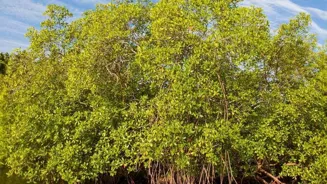Discover the hidden treasures of mangroves! Learn why they're crucial for wildlife and our environment. Dive in now!
Mumbai, India – In the bustling landscapes of India, amidst the vibrant colours and diverse
ecosystems, lies a natural treasure often overlooked: the mangroves.
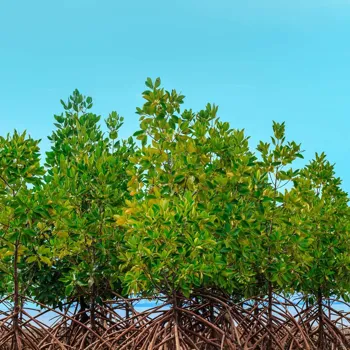
These unique coastal forests, thriving where the land meets the sea, are not just scenic; they are vital strongholds for a wide variety of wildlife. While we focus on the more prominent forests inland, understanding and protecting mangroves is crucial for a healthy environment.
Let’s take a look at why these watery woodlands are so important for our animal friends and our own well-being.
Mangroves are like natural nurseries for many aquatic species.
Think of them as bustling underwater cities where young fish, crabs, prawns, and other shellfish find food and safe spaces to grow. The dense network of roots acts like a protective shield, defending these vulnerable creatures from big predators and strong currents.
Without these mangrove havens, the populations of many commercially important fish would drastically decline, impacting both local fishermen and the larger seafood market.
Mangroves act like natural coastal defenders, reducing the impact of storms and tides.
The trees' complex root systems hold the soil together, preventing erosion and buffering the coastline from strong waves. This is particularly important in cyclone-prone regions where mangroves help to minimise damage to property and protect lives.
Healthy mangrove forests mean safer coastlines for everyone.
Our feathered friends, the birds, find mangroves to be very important resource. Mangroves provide essential nesting sites for various bird species, including migratory birds that travel long distances.
The rich ecosystem within mangroves also offers an abundance of food sources, such as insects, fish, and crustaceans, which sustain these avian populations. For birds that rely on coastal habitats, mangroves are indispensable for their survival.
Why Mangroves Matter: Unveiling Their Significance
Beyond their roles as nurseries, coastal protectors, and bird havens, mangroves play several other critical roles that directly benefit wildlife and the environment. Here are seven reasons why these watery woodlands are vital for wildlife:
Habitat Diversity
Mangroves are home to a fascinating mix of species, adapted to the unique conditions of brackish water (a mix of salt and fresh water). From mudskippers that hop on the mudflats to snakes that coil around the branches, mangroves support a rich variety of life.
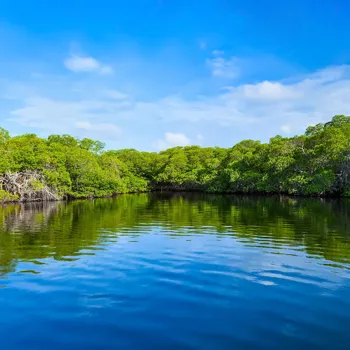
They are not just uniform forests, rather, a mosaic of distinct habitats.
Carbon Storage
Mangroves are exceptional carbon sinks, meaning they absorb and store significant amounts of carbon dioxide from the atmosphere. This ability helps in mitigating climate change by reducing greenhouse gases. What's more?
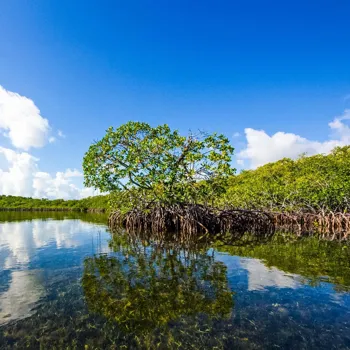
The carbon is stored in the soil beneath the mangroves for many years, making them more effective than other types of forests.
Water Filtration
The roots of mangroves act as natural filters, trapping sediments and pollutants from the water. This helps improve water quality for both wildlife and humans. Clean water is essential for healthy ecosystems, and mangroves play a crucial role in maintaining water purity near the coast.
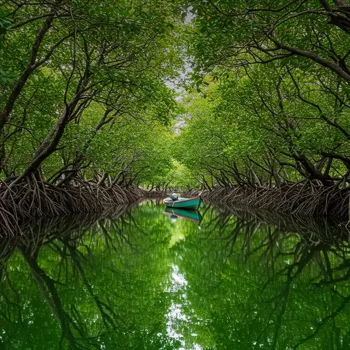
This natural filtration also protects delicate coral reefs further offshore from sediment damage.
Food Web Support
Mangroves support a complex food web. The decaying leaves and organic matter provide food for many small organisms, which in turn become food for larger animals. This intricate web of life sustains a diverse range of species, from microscopic organisms to top predators.
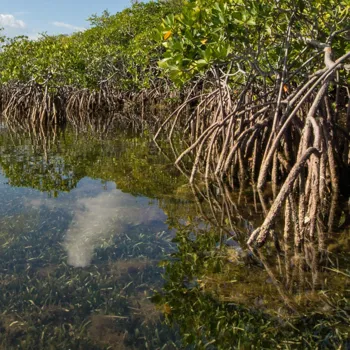
The energy from the mangroves flows through the entire ecosystem.
Community Champions: How Local Efforts Can Conserve Mangroves
Protecting mangroves is not just the responsibility of governments and organisations; local communities have a crucial role to play. When communities understand the importance of mangroves, they are more likely to participate in their conservation.
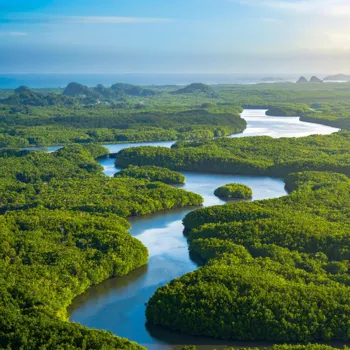
Sustainable fishing practices, mangrove restoration projects, and eco-tourism initiatives can help balance economic needs with environmental protection.
Education is key to fostering a sense of stewardship and encouraging communities to become active participants in mangrove conservation.
By working together, we can ensure the long-term health and resilience of these vital ecosystems. The future of mangroves depends on our collective efforts and our commitment to preserving these natural wonders.
Local ownership and traditional ecological knowledge are essential for mangrove conservation efforts to succeed.
Promoting responsible tourism in mangrove areas can also generate income for local communities while raising awareness about the importance of these ecosystems.
Tourists can enjoy activities like birdwatching, kayaking, and guided nature walks. This provides an economic incentive for communities to protect mangroves, as they directly benefit from their conservation.
Sustainable tourism practices minimize negative impacts and maximize the benefits for both the environment and the local economy.
